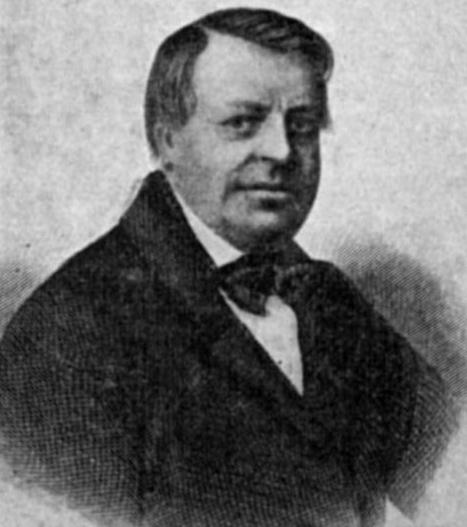Der Templer und die Jüdin
by
Heinrich Marschner
 in his later years |
The subject of this opera is the well known romance of Ivanhoe by Sir Walter Scott. The poet understood pretty well how to make an effective picture with his somewhat too extensive and imposing material. Its chief defect lies in the conclusion, which is lacking in poetic justice and cannot be considered satisfactory, for the heroine Rebecca who lovers her knightly succourer Ivanhoe, is only pitied by him, and so the difficulty of the situation is not solved to our liking. Apart from this defect, the opera is most interesting and we are won by its beautiful music, which may be called essentially chivalrous and therefore particularly adapted to the romantic text. In the opening scene we are introduced to the Knight-Templar, Brian de Bois Guilbert, who has fallen in love with the beautiful Jewess Rebecca, and has succeeded in capturing and detaining her in his castle. At the same time, Sir Cedric of Rotherwood, a Saxon knight, (father of Ivanhoe, whom he has disinherited), has been taken captive with his ward, the Lady Rowena, b their enemies, the Normans. Rebecca refuses to hear the Templar's protestations of love, and threatens to precipitate herself from the parapet, if he dares to touch her. Her wild energy conquers; and when he leaves her, Ivanhoe, the wounded knight to whom Rebecca is assigned as a nurse, tells her that friends have come to deliver them all. The outlaws, commanded by Richard Coeur de Lion, under the guise of the Black Knight, assault the castle, burn it, and deliver the captives. Poor Rebecca alone falls into the hands of the Templar, who does not cease to press his love-suit. Brian's deed soon becomes known, and his brother-Templars, believing Brian to be innocent, but seduced by a sorceress, condemn Rebecca to the stake. She makes use of her right to ask for a champion, and is allowed till sunset to find one. Brian himself tries all he can to save her, but she rejects his aid, for she loves Ivanhoe, though she is well aware that this noble knight loves his beautiful cousin Rowena. The day has nearly passed, the funeral pile awaits its victim, and no champion appears. The trumpets sound for the last time, when Ivanhoe presents himself in the lists to fight Brian, whom the Templars have appointed as his adversary. Ivanhoe is victorious; Brian falls lifeless, even before the enemy's sword touches him. All recognize the judgment of God, and Rebecca is given back to her desolate father. At the last moment, King Richard, who has long been absent on a crusade to Jerusalem, appears on the scene. He announces that henceforth he alone will govern the land and punish all injustice. Ivanhoe and Rowena are united by consent of Sir Cedric, who is now wholly reconciled to his valorous son.
Charles Annesley, |
| From Grove's ...[Marschner's] attention having been turned to English literature, his next opera, Der Templer und die Jüdin (produced at Leipzig on 22 Dec 1829), was composed to a libretto constructed by himself and Wohlbrück [his brother-in-law] from Scott's Ivanhoe. The freshness and melody of the music ensured its success at the time, but the libretto, disjointed and overloaded with purely epic passages which merely served to hinder the action, killed the music.
| |
From the Archives of LaScala: |
"Der Templer und die Jüdin" Grande Opera Romantica in 3 Atti. Lo Spettacolo non risulta essere eseguito in Scala tra il 1953 e il 1996 Personaggi: Cedric von Rotherwood (Basso) ...[includes all the known singers with ranges], then: Albert Malvoisin - Attore Herdibert - Attore Elgitha - Attore Robert - Attore Philipp [sic] - Attore Conrad - Attore Walter - Attore Willibard - Attore Isaac von York - Attore Coro Misto Comparse [Orchestra - then] Sulla scena: 1 ottavino - 1 flauto - 1 oboe - 2 clarinetto - 2 fagotto - 6 corno [!] 2 tromba, 3 trombone, 1 trombone basso - 1 tamburo basco Durata: 3 ore 15 minuti Materiale esistente presso la biblioteca centrale di Zurigo e la biblioteca statale di Monaco di Baviera. L'Edizione Brockhause è secondo la revisione di H. Pfitzner.
|